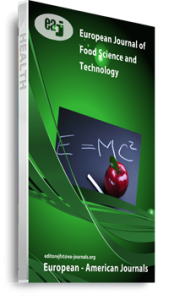This paper thus assessed effects of Non-Timber Forest Products (NTFPs) in Oyo state on the household’s food security level. Multistage sampling technique was employed, firstly, purposive selection and ogbomoso agricultural zones of Oyo state, secondly, random selection of four (4) LGAs, random selection of 40% of blocks and random selection of a village from each of the selected blocks. Random selection of 3.5% of the women that involved in non-timber forest products in the study and this resulted into selection of 214 respondents for the study. Interview schedule was used to collect primary data from a respondents (women) based on the set objectives of the study.The mean age of the most of the respondents was 47years. The result of the finding also indicates that most of them were married and have a mean years of schooling was 12years which implies that most of them gad secondary school education. it was indicates that the three major religions were being practiced in the study area. The numerous opportunities accrued to the usage of forest products could be further exploited by educating rural women on other environmentally sustainable benefits of the non-timber forest products in their areas. It was also revealed that most households had an average of seven (7) members in their households. Polygamy system of marriage was the most widely adopted system in the study. Farming is the major livelihood activity and most of the respondents engaged in crop production in the study area. The mean farm size of most of the respondents was found to be 11.06 hectares while the mean years of farming experience was 23years. Most of the respondents did not belong to any social organizations. Most of the non-timber forest products were utilized majorly as food, fruits, medicine while some were utilized purposively as wrapping materials, oil, fuel, duck stock and construction/handcraft purposes. Most of the non-timber forest products identified in the study area were most commonly consumed at moderate level. Most of the households were highly satisfied with the utilization of the non-timber forest products in their households. The potentials embedded in the utilization of non-timber forest products were yet to be fully utilized in the study area. Women were found contribute to family nutrition through the utilization of non-timber forest in the study area. Most of the households were moderately food secured. The results of the analysis revealed that age (r=0.124*) and years of schooling (r=0.148*) were significantly related with household food security level. Based on the results of the finding, the following recommendations are necessary; more effort should also be made to create more awareness on the potentials in non-timber forest products utilization to further reduce poverty level in the study area, government and other stakeholders in agricultural development should intensify effort and give more support to the farmers in terms of financial, training, monitoring and other essential services in order to boost the level of production in the study area and more effort should be made to address the issue of poor labour supply in the study so as to reduce incidence of not able to carry out most of the farm activities and to aid timeliness in carrying out farm activities.
Keywords: Consumption, Food Security, Household, Nigeria, Oyo State, Products, non-timber forest

